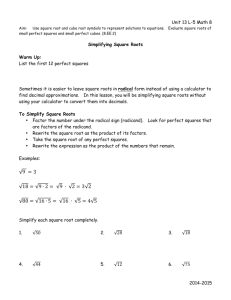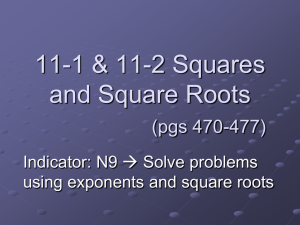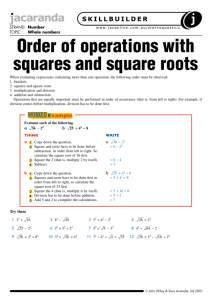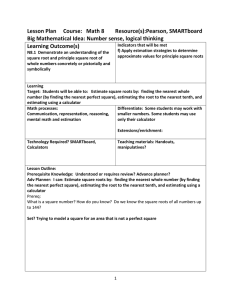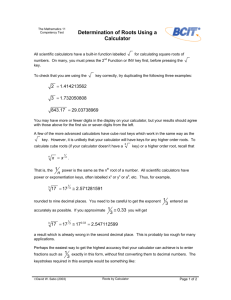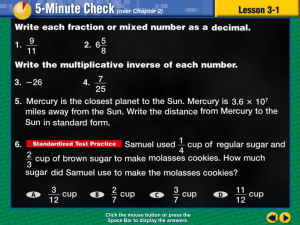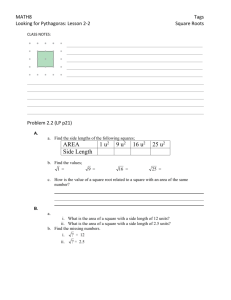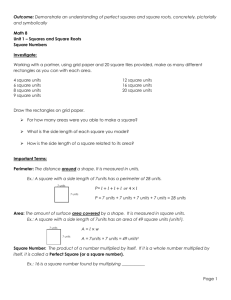Notes M3S1E1 pg. 165-7
advertisement
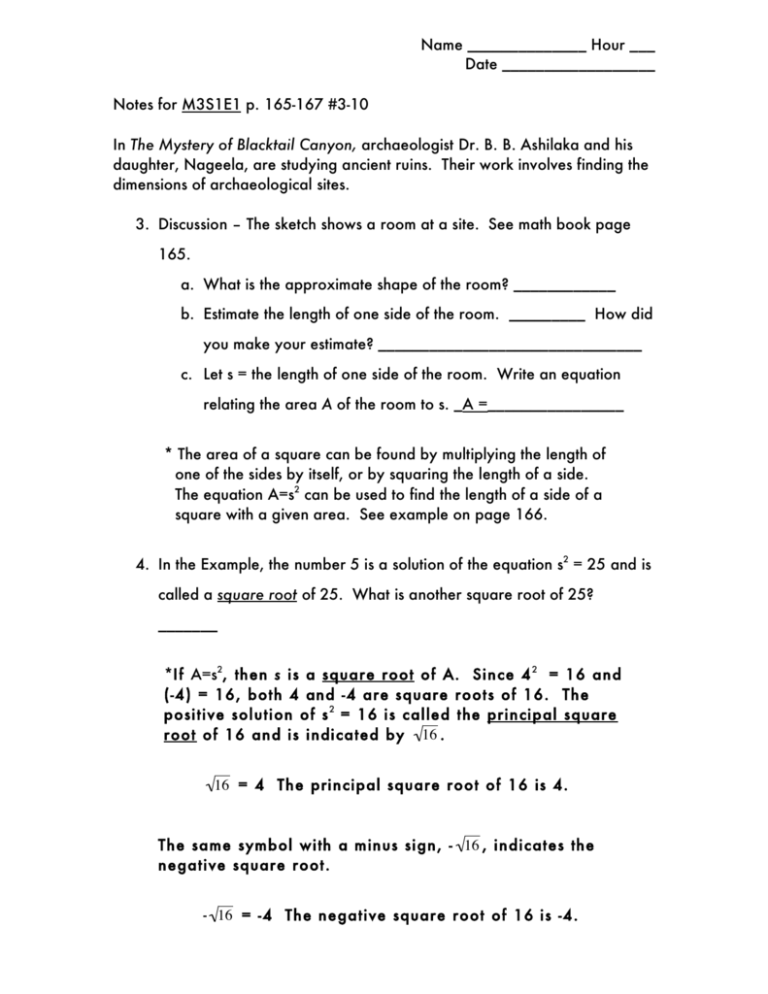
Name ______________ Hour ___ Date __________________ Notes for M3S1E1 p. 165-167 #3-10 In The Mystery of Blacktail Canyon, archaeologist Dr. B. B. Ashilaka and his daughter, Nageela, are studying ancient ruins. Their work involves finding the dimensions of archaeological sites. 3. Discussion – The sketch shows a room at a site. See math book page 165. a. What is the approximate shape of the room? ____________ b. Estimate the length of one side of the room. _________ How did you make your estimate? _______________________________ c. Let s = the length of one side of the room. Write an equation relating the area A of the room to s. _A =________________ * The area of a square can be found by multiplying the length of one of the sides by itself, or by squaring the length of a side. The equation A=s2 can be used to find the length of a side of a square with a given area. See example on page 166. 4. In the Example, the number 5 is a solution of the equation s2 = 25 and is called a square root of 25. What is another square root of 25? _______ *If A=s2, then s is a square root of A. Since 4 2 = 16 and (-4) = 16, both 4 and -4 are square roots of 16. The positive solution of s 2 = 16 is called the principal square root of 16 and is indicated by 16 . 16 = 4 The principal square root of 16 is 4. ! ! The same symbol with a minus sign, - 16 , indicates the negative square root. - 16 = -4 The negative ! square root of 16 is -4. ! 5. Use mental math to find each value. a. 81 c. b. 49 d. - 9 e. - 64 1 f. - 144 *! The numbers 1, 4, 9, 16, and!25 are perfect squares. A perfect ! square is a number whose principal square root is a whole number. ! ! ! *See examples of perfect squares on page 166. 6. List the next five perfect squares after 25. • _____ • _____ • _____ • _____ • _____ Now list some numbers that are not perfect squares. ____ ____ ____ *Estimating Square Roots – In Question 3 you estimated need to estimate many square roots. 7. Calculator Use the key to estimate 39 . You 39 . Compare this estimate ! with you estimate from Question 3. _______________ 8. Try This as a! Class ! a. Follow these steps to make a table. 1. List the first 25 consecutive whole numbers in the first column 2. Find and record the principal square root of each perfect square 3. Use a calculator to estimate the principal square roots of the other numbers. b. Look at the whole numbers between 4 and 9. Compare their square roots with 4 and 9 . ___________________________ c. Make some predictions about the square roots of the whole numbers ! between !25 and 36. Check your predictions. _____________________________________________________ 9. Answer the following questions. a. Since 45 is not a perfect square, its principal square root is not a whole number. Is b. Estimate 45 closer to 6 or 7? _________ 45 to the nearest tenth. Do not use your calculator. ___ c. Square your ! estimate in part (b) to check for accuracy. _______ d. Use ! your result in part (c) to improve your estimate. _______ e. Use the key on your calculator to find 45 to the nearest thousandth. __________ f. !When can you use mental math instead of your calculator to ! estimate square roots? ______________________________ 10. √Checkpoint – Use mental math to estimate each square root. Then use a calculator to find each square root to the nearest tenth. Question a. 55 ! b. 37 ! c. 62 ! d. 103 ! Mental Math Answer Calculator Answer

